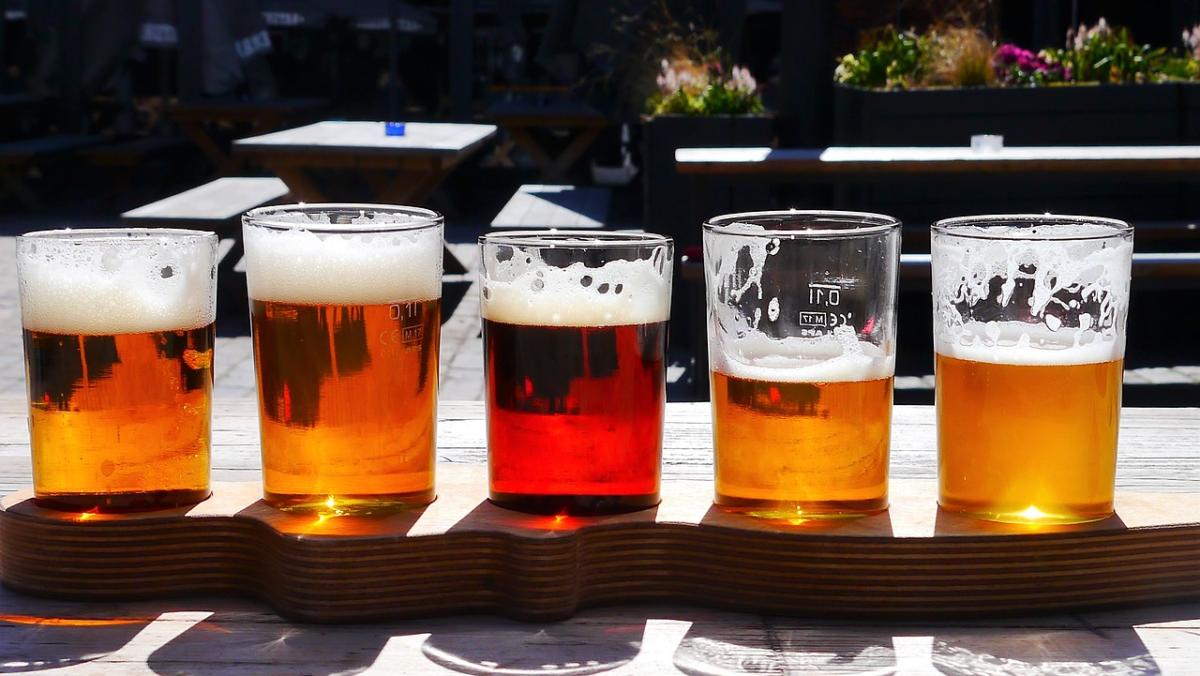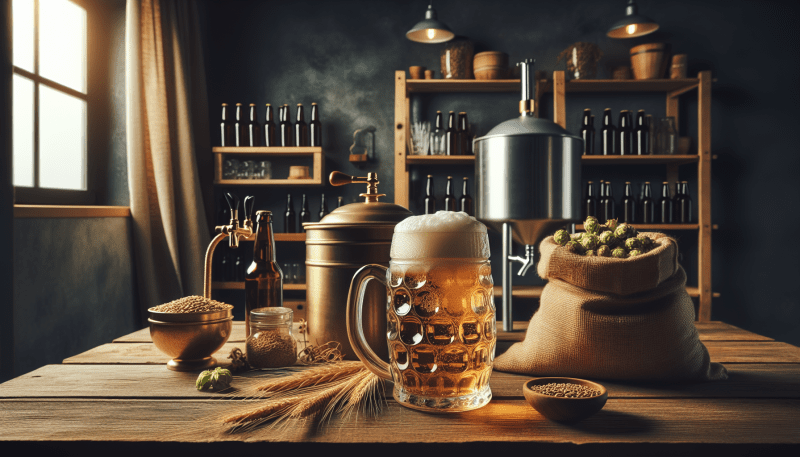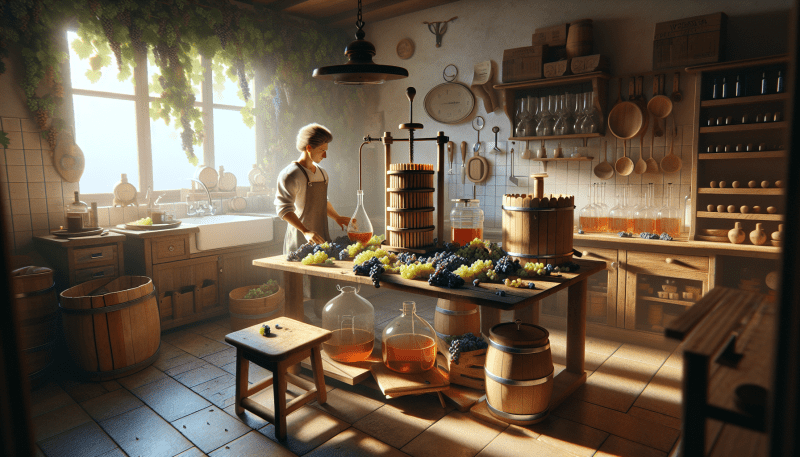When it comes to beer, the variety is truly endless. From the classic lagers to the hoppy IPAs, there’s something for everyone. If you’re looking to expand your palate, here are some types of beer you should definitely try.
Lager: One of the most popular styles worldwide, lagers are known for their clean, crisp taste. They are fermented at lower temperatures, resulting in a smooth finish. Whether you go for a light pilsner or a darker Vienna lager, you’ll appreciate the refreshing quality that makes lagers perfect for any occasion.
India Pale Ale (IPA): If you're a fan of hoppy flavors and aromas, IPAs are a must-try. These beers are characterized by their strong hop presence, which can range from floral to citrusy notes. You’ll find various sub-styles, like the West Coast IPA, which tends to be more bitter, and the New England IPA, which is hazy and juicy. Each offers a unique experience for hop lovers.
Stout: For those who enjoy rich and robust flavors, stouts are an excellent choice. They are dark beers brewed with roasted malt, which gives them their characteristic coffee and chocolate notes. Try a classic Irish stout like Guinness, or explore a chocolate stout for a sweeter twist. Stouts can be perfect for pairing with desserts or enjoying by the fireplace.
Wheat Beer: If you prefer something light and refreshing, wheat beers are a delightful option. Brewed with a significant proportion of wheat, these beers have a cloudy appearance and a smooth, creamy texture. Styles like Hefeweizen or Witbier are often flavored with spices like coriander and hints of citrus, making them a perfect thirst-quencher on a hot day.
How Beer is Made Today
Beer production today combines ancient techniques with modern technology, creating a fascinating process that appeals to both traditionalists and craft enthusiasts. It all starts with four basic ingredients: water, malted grains, hops, and yeast. The quality and type of each ingredient can significantly influence the final flavor, aroma, and appearance of the beer.
The journey begins in the brewery, where grains like barley are malted. This involves soaking them in water and allowing them to germinate before drying them in a kiln. This malting process enhances the sugars that yeast will eventually consume during fermentation. Once the malt is ready, it's crushed into a coarse powder, known as grist, which is then mixed with hot water in a process called mashing. This step converts the starches in the grain into fermentable sugars, forming a sweet liquid known as wort.
The next exciting stage is boiling the wort, where hops are added. Hops are the flowers of the hop plant and add bitterness, flavor, and aroma to the beer, balancing the sweetness of the malt. The boiling process also sterilizes the wort, ensuring that no unwanted microorganisms spoil the brew. After boiling, the wort is rapidly cooled and transferred to fermentation tanks, where yeast is added. This tiny organism is essential, as it consumes the sugars in the wort and produces alcohol and carbon dioxide, creating the beer we love.
Once fermentation is complete, the beer undergoes conditioning, allowing its flavors to mature. It may be filtered or carbonated before being bottled or canned. Many breweries also experiment with additional ingredients, like fruits, spices, or even barrel aging, to create unique varieties. Today’s craft beer movement encourages innovation and experimentation, making the world of beer more diverse and exciting than ever.
Global Beer Styles Explained
Beer is one of the oldest beverages in the world, with a rich history that has led to an incredible variety of styles. Each style reflects the unique ingredients, brewing techniques, and cultural influences from different regions. From the hoppy ales of the Pacific Northwest to the crisp lagers of Germany, the diversity in flavors and aromas makes the world of beer truly fascinating.
One of the most prominent beer styles is the IPA (India Pale Ale), known for its bold hop character and varied bitterness. Originating from England, IPAs have evolved significantly, especially in the United States, where brewers have experimented with different hop varieties, giving rise to numerous sub-styles such as New England and West Coast IPAs. These beers often feature bright citrus and pine notes, making them a favorite among craft beer enthusiasts.
Another major category is lager, which is fermented at lower temperatures, resulting in a clean, crisp taste. Traditional German lagers, such as Pilsner and Helles, are characterized by their golden color and refreshing finish. They are perfect examples of how straightforward ingredients can create a beautifully balanced beer. On the other hand, American lagers tend to be milder, making them approachable for newcomers to the beer world.
Stouts and porters represent yet another exciting realm, with their rich, dark colors and complex flavors. These beers often feature notes of coffee, chocolate, and caramel, thanks to the roasted malt used in their production. The beloved Imperial Stout is especially noteworthy, boasting higher alcohol content and deeper flavors, making it a perfect choice for sipping on a cold evening.
Exploring these different styles opens up a world of taste experiences, celebrating the creativity and craftsmanship of brewers around the globe. Whether you enjoy a light lager on a hot day or a robust stout by the fire, each beer style has its own story and allure waiting to be discovered.
Taste Profiles of Popular Beers
When it comes to beer, each variety offers a unique taste profile that can delight the senses. From hoppy IPAs to smooth stouts, the flavor spectrum is as broad as it is exciting. One of the most popular categories, the India Pale Ale (IPA), is known for its strong and often bitter hop flavor. With citrusy and piney notes, IPAs can range from dry to juicy, making them a favorite among hop enthusiasts.
On the other end of the spectrum, stouts provide a rich and deep experience. These dark beers are brewed with roasted malts that impart flavors of chocolate, coffee, and caramel. A classic example is the Guinness stout, which showcases smoothness and a creamy mouthfeel, leaving a lasting impression on those who savor it. It's the perfect choice for anyone looking to indulge in a hearty beer.
If you prefer something lighter, a wheat beer could be right up your alley. These beers, often brewed with a significant proportion of wheat, are typically refreshing and slightly fruity. Hefeweizens, a popular style, come from Germany and are known for their banana and clove aromas. Their cloudy appearance and smooth finish make them a go-to for warm weather or casual gatherings.
Finally, let's not overlook the popularity of lagers. Crisp and clean, lagers are fermented at cooler temperatures, resulting in a refreshing taste. They can vary from light, easy-drinking options like Pilsners to darker varieties like Dunkels, which offer more robust flavors. Whether you’re sipping a light lager on a hot day or enjoying a richer one with a hearty meal, lagers are versatile enough to satisfy many palates.



